For much of human history, sleeping arrangements were very informal. You heaped a pile of straw or leaves on the floor, covered it with animal skin or a large linen cloth, and tucked yourself in with a cloak or a blanket. It wasn’t until the Middle Ages that people started to afford a bit of luxury. Mattresses were stuffed with feathers, wool, or horse hair, depending on the level of comfort desired, with feathers being the softest and the costliest of stuffing. Considerable attention was given to the bedstead too. Made of wood, they were decorated with inlaid, carved, and painted ornamentation. Upon these the mattress was laid and cushions with embroidered coverlets were propped up.
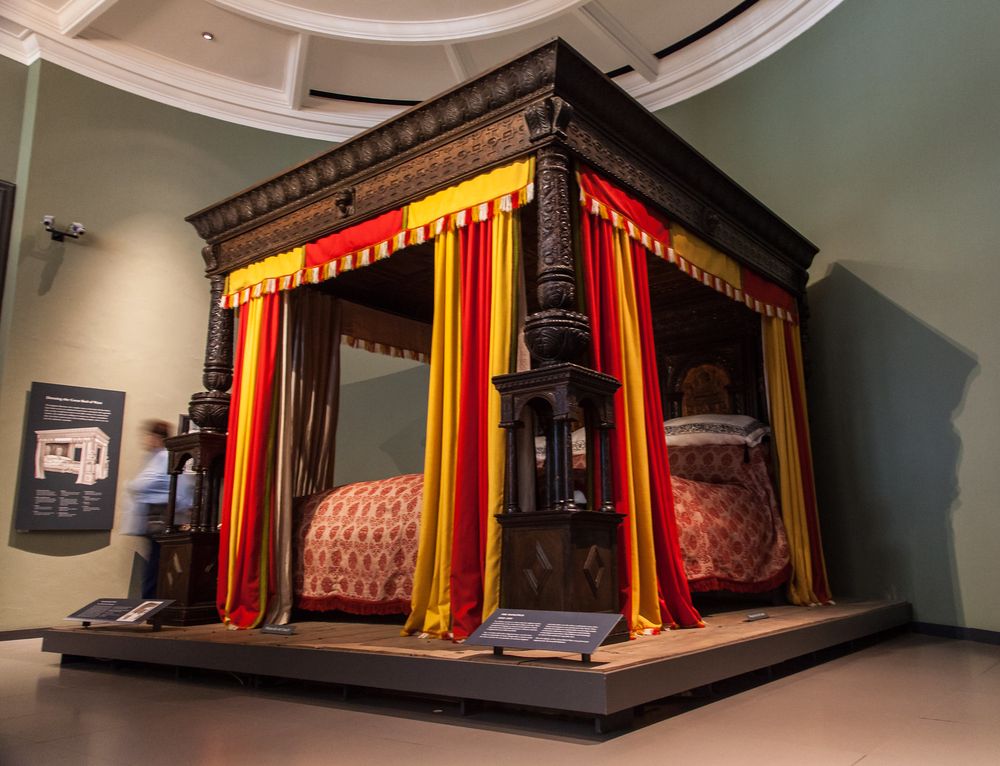
The world’s largest bed, the Great Bed of Ware, at Victoria and Albert Museum in London. Photo: Paul Gravestock/Flickr
By the 14th century, beds became one of the most valuable things a homeowner possessed. Consequently, some beds were made solely to impress. The best bed in the household was kept downstairs, in the living room, where it could be marveled by visitors. Richly decorated with silk, velvet, fur and even cloth of gold, this bed was reserved for important visitors, but in practice it was hardly slept upon. When William Shakespeare died, he famously left his “second-best bed” to his wife Anne Hathaway. While some may perceive this unusual bequest in the will as an insult to the wife, by “second-best bed” the great playwright was most certainly referencing his actual marriage bed which he shared with his wife, and therefore was associated with the most tender memories.
It was during the 14th century that four poster bed made its first appearance. These beds have four vertical columns, one in each corner, that support an upper panel called the tester. The tester usually had rails to allow curtains to be pulled around the bed to keep out draughts and keep the occupants of the bed warm while also giving them privacy, since it was customary for servants to sleep in the same room as their masters.
From the 15th century onwards, beds started to become unusually large reaching 7 to 8 feet across, but the most humongous of them all is undoubtedly the Great Bed of Ware, currently at the Victoria and Albert Museum in London. One of the most famous piece of furniture in history, this spectacular four-poster bed measures ten feet by eleven feet, and is reportedly large enough for four couples to lie side by side without touching each other.
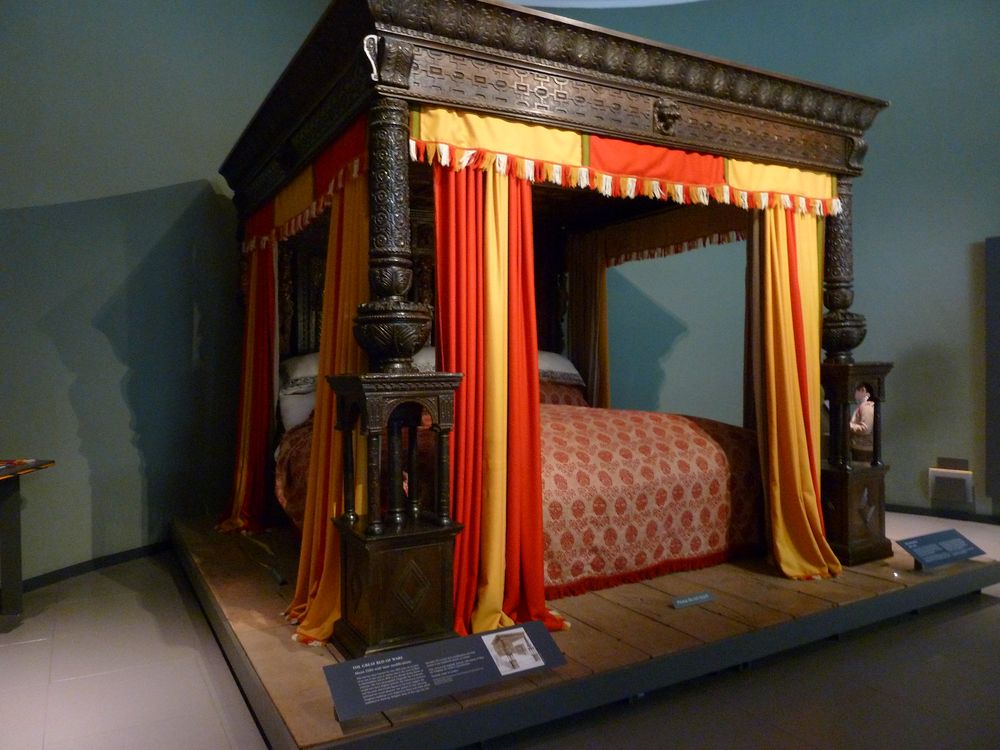
The Great Bed of Ware measures 11 by 10 feet and weighs 641 kg. Photo: givingnot@rocketmail.com
The Great Bed of Ware was made around 1590, during the reign of Queen Elizabeth I, most likely as an advertising gimmick to draw travelers and guests to a particular inn in Ware, Hertfordshire. Ware was a day's journey from London and a convenient overnight stop for travelers going to Cambridge University or further north.
The bed’s woodwork is richly decorated with Renaissance designs, ornamental ribbon-like patterns, and popular motifs such as acanthus leaves, as well as lions and saytrs symbolizing virility and fertility. The bed was originally painted in bright colours. Together with the complex suite of hangings and bedclothes, the bed must have achieved an overwhelmingly rich and dramatic effect, particularly in candlelight.
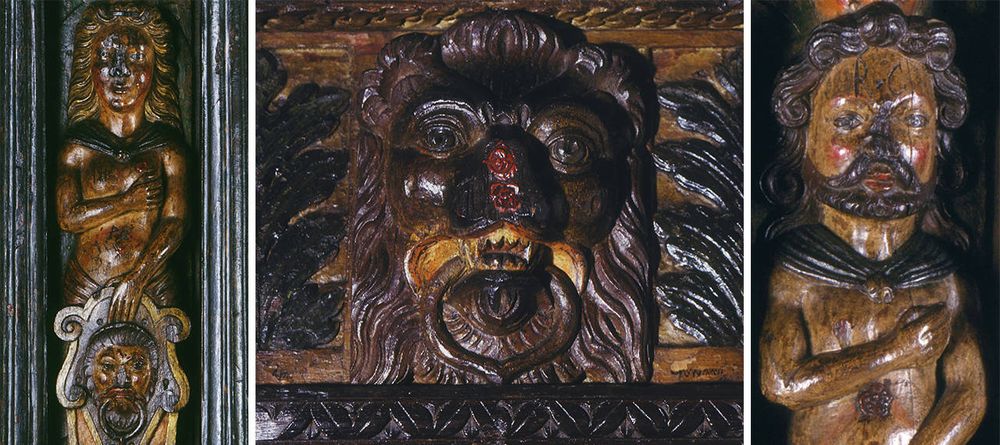
Decorative woodwork on the Great Bed of Ware. Photo: Victoria and Albert Museum, London
The bed was first mentioned in 1596 by a travelling German prince staying at the White Hart. Five years later, it found its way into Shakespeare's Twelfth Night, where one of the characters of the play, Sir Toby Belch, describes a sheet of paper as “big enough for the Bed of Ware”. The Great Bed has since been mentioned in many literary works including ‘Northwood Ho’ a play by Thomas Dekker & John Webster, first performed in 1605; Ben Johnson’s play “Epicoene or The Silent Woman”, performed in 1609; Richard Brome ‘s ‘The Sparagus Garden’, a comedy performed in 1635; and Byron’s ‘Don Juan’ published in 1821, to name a few.
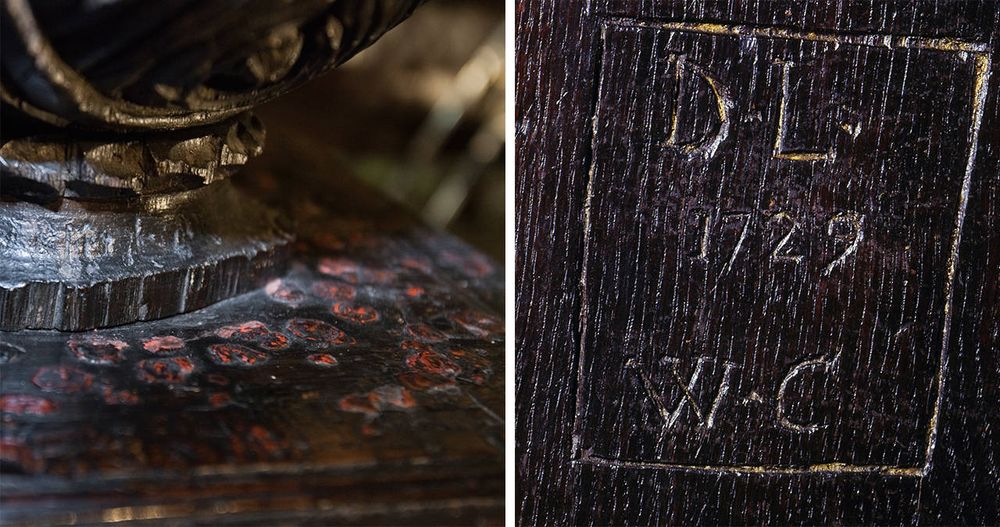
Graffiti on the Great Bed of Ware—red wax seals and carvings. Photo: Victoria and Albert Museum, London
Unfortunately, the bed has been greatly vandalized and defaced by guests, possibly by amorous couples who had spent a night on the bed and found obliged to carve their initials into the wood with a penknife or another sharp object. Some applied red wax seals to mark their night on the bed.
The bed stayed in Ware for nearly three centuries, passing around several inns before it moved to Hoddesdon in 1870 and became a bank holiday attraction during the boom in rail travel.
In 1931 the Great Bed of Ware was acquired by the Victoria and Albert Museum for £4,000, which was four times the Furniture Department's annual budget for acquisitions at the time. This made the Great Bed the most expensive single piece of furniture ever bought by the museum.
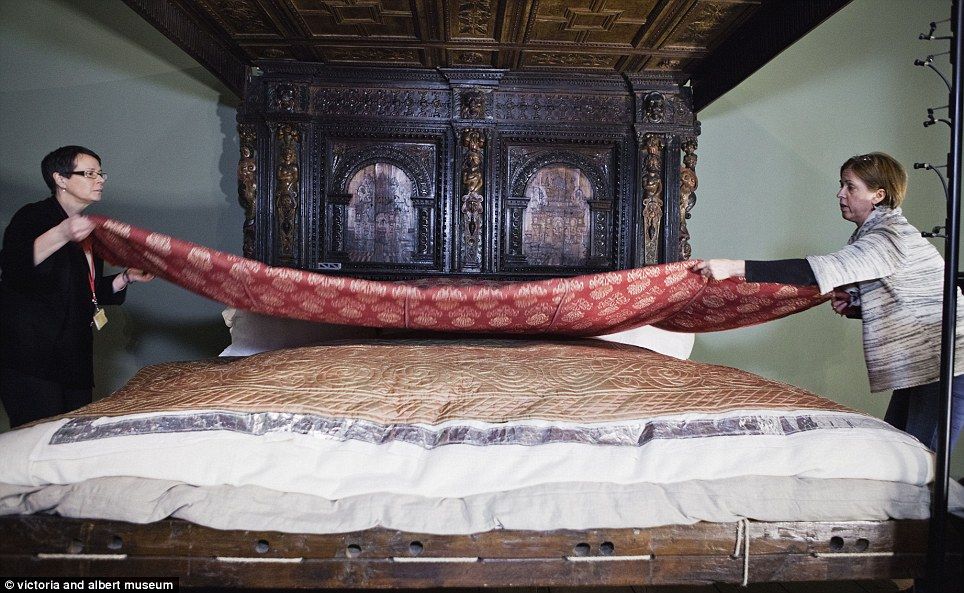
Photo: Victoria and Albert Museum, London

Photo: Victoria and Albert Museum, London
References:
# The Great Bed of Ware, V&A Museum
# The Great Bed of Ware and its time in Ware, www.greatbedofware.org.uk
# The Second-Best Bed, Shakespeare Birthplace Trust
# Mark Brown, V&A Museum's Great Bed of Ware makes itself at home, The Guardian



Comments
Post a Comment